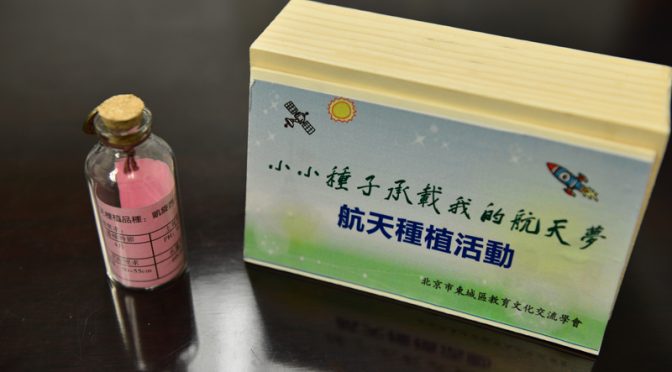On the basis of one-year experience on space-seed nursery, Beijing Dong Cheng District Municipal Education Commission collaborates with the Hong Kong Institute of Education for Sustainable Development to launch “Education for Sustainable Development and Biodiversity: Space-Exposed Seed Nursery Programme”. The space-seeds have been delivered to three institutions in places with contrasting climates, namely Beijing, Hong Kong and Yunnan, for investigating how climatic factors affect the growth of the seedlings. As The Chinese Foundation Secondary School (CFSS) is renowned as the Exemplary School for UNESCO Project on Education for Sustainable Development in China, to recognize our dedication to promoting sustainability and biodiversity (with 1000+ species of plants on campus), the School is selected to represent Hong Kong to nurture the seedlings.
The CFSS Space-Exposed Nursery Committee consisting of 50 teachers and students monitors the growth of seedlings day by day. Supervised by senior students, all committee members record in details how temperature, soil humidity and other parameters affect seedling growth using cloud technology coupled sensors. Besides learning beyond the scope of curricula, most importantly, students are cultivated with love and responsibility.

The School has successfully cultivated the space-exposed cowpea plants from the 3rd to the 5th generation with the greatest endeavor in 6 months, and represented Hong Kong to share how CFSS advocated biodiversity, sustainability and Popular Science on campus and to the community through the Project in the Space Seed Conference in Tengchong in Nov 2015. The Space Seed Exchange Programme was launched among 21 partner schools of The Aerospace Science Education Alliance. CFSS received another batch of space seeds from China Aerospace Science and Technology Corporation, joining hands to foster aerospace education in China.

The School has conducted a comparative study on the growth of space seeds and ordinary seeds on the species of Cowpea No.1, Cowpea No.2, Eggplant, Tomato and Red Chili in these two years. There is no obvious difference in the length for Red Chili, yet the space exposed ones grow spirally. For growth rate and harvesting rate, space seeds double the ordinary ones for all species investigated. It is believed that the seeds would undergo certain degree of genetic mutations under the influence of weightlessness and direct exposure to cosmic rays in space. Three secondary schools and two primary schools have recently joined this programme. With their concerted efforts, this CFSS Project would be further promoted.

The CFSS Space-Exposed Nursery Committee participated in the 31st China Adolescents Science & Technology Innovation Contest (CASTIC) last year with the theme “Green Gurus: Promotion of Species Continuity: Space-Exposed Seed Nursery Project”. The School has received high national honours of the “Best Ten Students’ Organized Activity Award” and “First Place Grand Award of the Best Students’ Organized Activity Category”. CFSS hopes that China Aerospace Science and Technology Corporation can deliver more space seeds to schools for academic studies, to echo the surge of Aerospace Science Education on our motherland.
